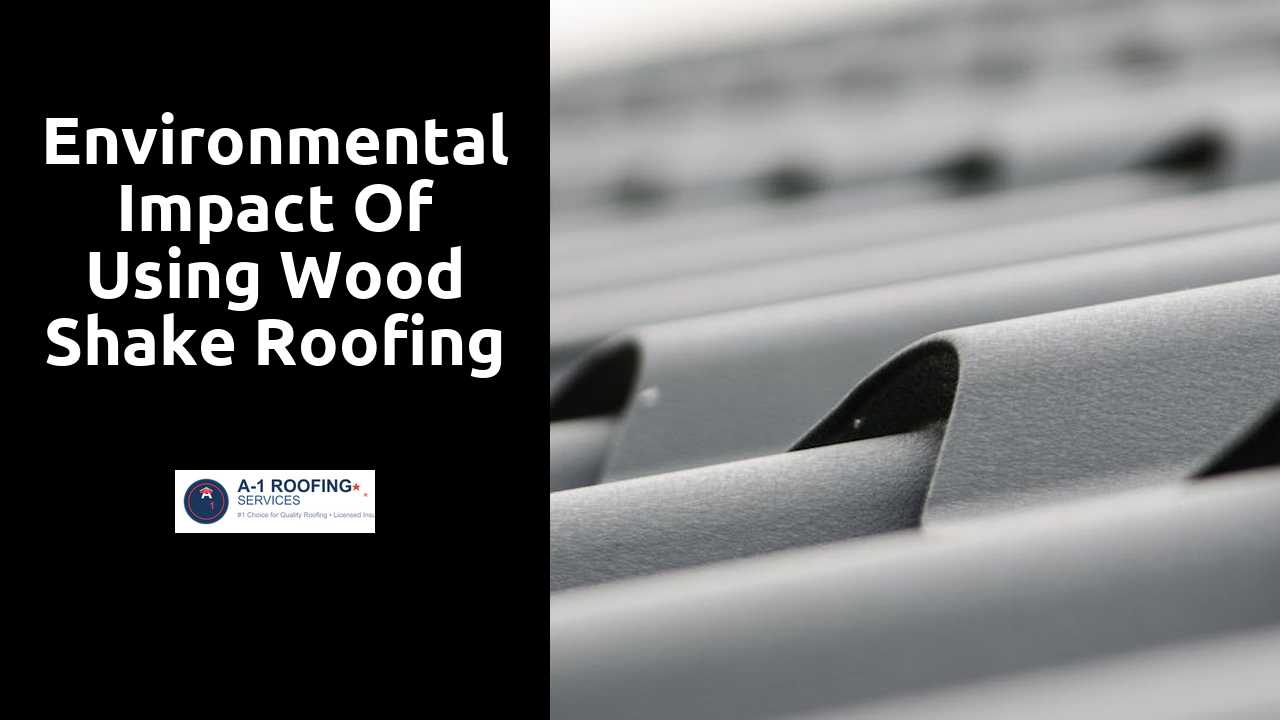
Environmental Impact of Using Wood Shake Roofing
Table Of Contents
Potential Environmental Drawbacks
Using wood shake roofing presents several environmental concerns that deserve attention. The process of sourcing raw materials often leads to extensive logging, which may contribute to deforestation in certain regions. This practice can undermine local ecosystems and result in soil erosion, as tree roots are integral to maintaining the stability of the ground. Moreover, the demand for high-quality wood can exacerbate these issues, encouraging unsustainable forestry practices that prioritize immediate profit over long-term environmental health.
Beyond deforestation, the production and installation of wood shake roofing can pose challenges for biodiversity. Habitat destruction from logging activities disrupts the lives of countless species, ranging from birds to small mammals. These organisms rely on mature forests for shelter and food, and their removal can lead to imbalanced ecosystems. Additionally, the runoff from treated wood shakes can introduce harmful chemicals into surrounding soil and waterways, further exacerbating the risk to local wildlife and plant life.
Hop over here to discover more.
Deforestation Concerns
The demand for wood shake roofing raises significant concerns about deforestation, particularly in regions where timber is harvested unsustainably. The extraction of trees for roofing contributes to the depletion of forests, which are essential for maintaining ecological balance. As forests are cleared, both the biodiversity within these ecosystems and the natural processes they support suffer, leading to long-term environmental consequences.
In addition to loss of trees, the methods used for logging often result in soil erosion and degradation of the surrounding landscape. Sustainable forestry practices can mitigate some of these issues, but they are not universally applied. The continued reliance on wood products accentuates the need for mindful consumption to protect forested areas that serve vital roles in carbon storage and habitat preservation for countless species.
Impact on Wildlife and Ecosystems
The extraction of wood for shake roofing can significantly alter local ecosystems. Logging activities often lead to habitat destruction, disrupting the natural living environment of various wildlife species. When trees are cut down, the loss of habitat forces animals to relocate, which can lead to population declines or even extinction in some cases. Additionally, the fragmentation of habitats can isolate wildlife populations, making it difficult for species to interact and breed, further threatening their survival.
The impact on biodiversity can be profound. The removal of trees disrupts food chains and can alter the balance of local ecosystems. For instance, many bird species rely on specific tree types for nesting and foraging. When these trees are removed, it reduces their ability to reproduce and thrive. Furthermore, the chemicals used in the treatment of wood shakes can leach into the soil and waterways, posing risks to local flora and fauna. These factors collectively contribute to a declining health of ecosystems reliant on intact forest areas.
Habitat Disruption from Logging
The logging required for harvesting wood shakes can lead to significant habitat disruption in forested areas. Trees provide vital ecosystems for countless species, and when large tracts are cleared, wildlife is often forced to relocate. This can cause stress for animals unable to adapt quickly to new environments. Furthermore, many species face increased competition for resources in fragmented habitats, leading to declines in population and biodiversity.
In addition to direct impacts on species, the removal of trees alters the landscape in ways that may have lasting consequences. Soil erosion becomes more pronounced as tree roots, which stabilize the ground, are removed. Alterations in water flow and quality can also occur, impacting both terrestrial and aquatic ecosystems. These changes create a domino effect, further threatening the delicate balance maintained within natural habitats.
Alternative Roofing Materials
When considering roofing options, there are several alternatives that offer different environmental benefits. Metal roofing is one such choice, made from recycled materials and possessing a long lifespan. This type minimizes waste and often reflects heat, contributing to energy efficiency in buildings. Another viable option is asphalt shingles, which can also be manufactured with recycled components. Though not as durable as metal choices, they are widely available and typically more affordable.
Another alternative gaining popularity is synthetic roofing materials. These products can mimic traditional materials, such as wood or slate, while being lighter and more resistant to pests and rot. They often require less maintenance, reducing the need for frequent repairs or replacements. Green roofing, utilizing vegetation, adds an extra layer of insulation and helps with stormwater management. Each of these materials can significantly reduce the overall environmental footprint of a roofing project while providing functional benefits.
Comparing Environmental Impacts
Wood shake roofing poses certain environmental challenges, but it also offers benefits compared to other materials. When assessing the environmental impact, factors such as production, transportation, and recyclability come into play. Asphalt shingles, a common alternative, generate significant amounts of waste and require fossil fuels for production. In contrast, wood shakes can be sourced sustainably, especially when derived from managed forests that ensure regeneration.
While wood shakes are biodegradable, their life span may not match that of synthetic options, which can have a longer operational life but often are not recyclable. Metal roofing materials present a different set of ecological considerations, as they can be highly energy-intensive to produce but are generally recyclable at the end of their lifecycle. Evaluating these various roofing materials reveals a complex interplay between environmental benefits and drawbacks, highlighting the importance of making informed decisions based on specific ecological priorities.
Related Links
Lifespan Expectations for Wood Shake RoofingCosts Involved in Installing Wood Shake Roofs